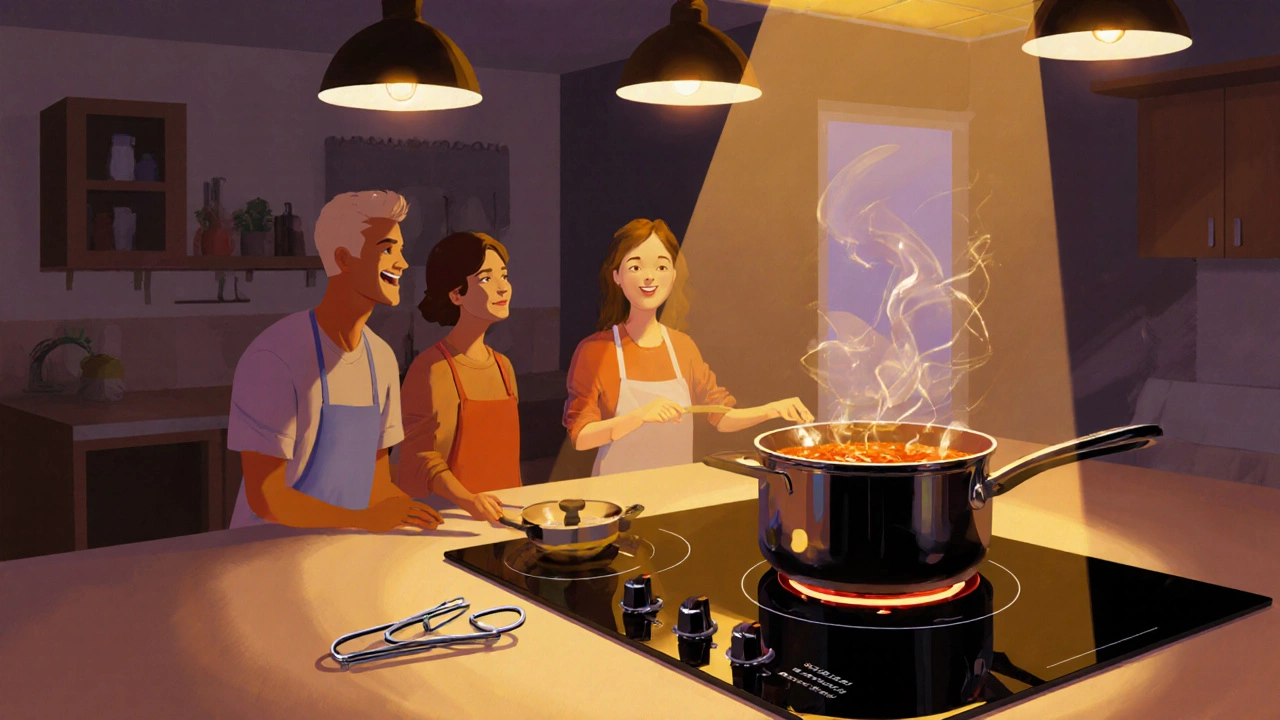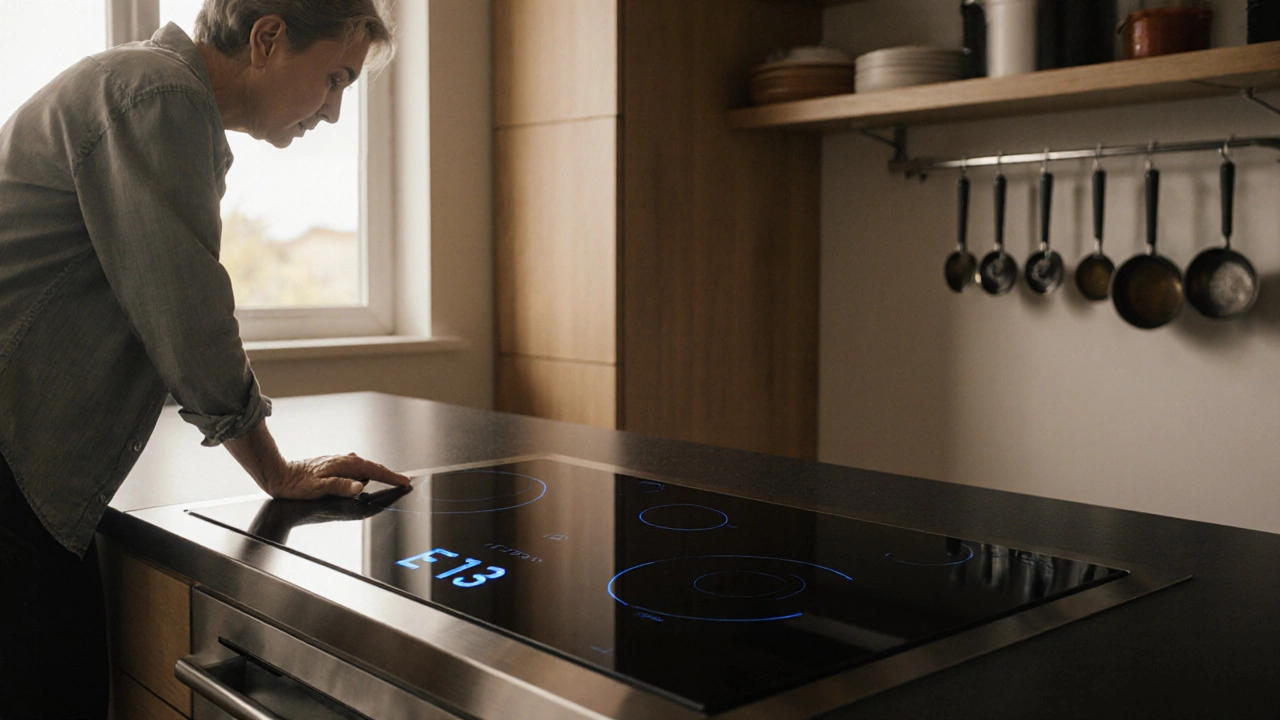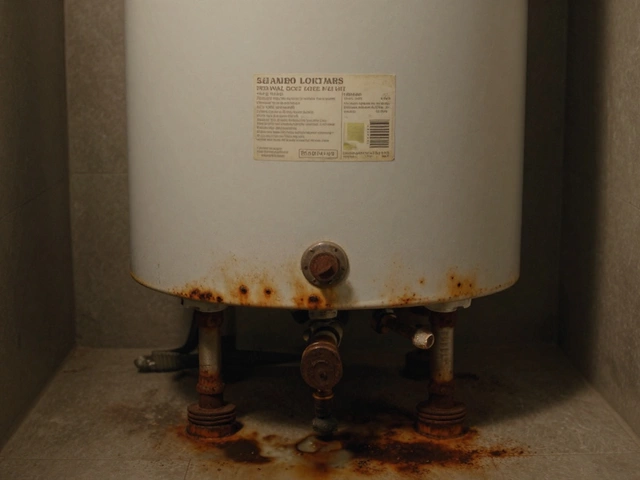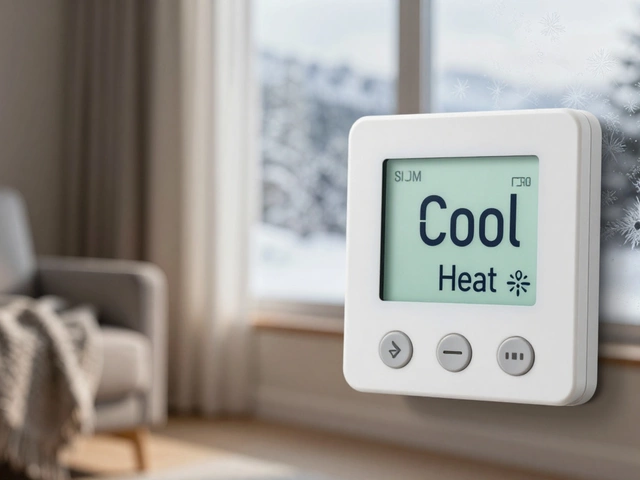Electric Hob Error Code Checker
Find Your Hob's Error Code Solution
When your Electric hob stops heating or shows error codes, a quick reset can often bring it back to life without calling a technician. Below is a practical, no‑jargon guide that walks you through every reset method, explains why the hob might need one, and shows how to avoid future hiccups.
Quick Takeaways
- Identify whether the issue is a simple power glitch or a deeper component fault.
- Most resets involve turning off the circuit breaker, waiting a minute, then restoring power.
- For touch‑controlled hobs, a dedicated Reset button or a long‑press on the power key can clear errors.
- If the hob still won’t heat after a reset, check the Thermal fuse and the Control board before calling a pro.
- Regular cleaning of the Touchpad and keeping the Power supply stable extends the hob’s lifespan.
What Makes an Electric Hob Tick?
An electric hob consists of a flat Cooktop surface with embedded heating zones, a Control board that interprets user inputs, and safety devices like a Thermal fuse that cuts power if overheating occurs. Modern units use a capacitive Touchpad instead of knobs, and many include a hidden Reset button or a diagnostic mode.
Why Your Hob Might Need a Reset
Common triggers include:
- Sudden power surges - often caused by lightning or faulty wiring.
- Overheating - if a pot boils dry, the thermal fuse trips.
- Software glitches - touch‑pad misreads or a stuck command.
- Incorrect settings - leaving a zone on while the unit powers down.
In most cases, the hob’s internal logic simply needs a fresh start, which is what a reset does.
Step‑by‑Step Reset Procedures
Depending on the make and model, you have three main ways to reset.
1. Hard Reset via Circuit Breaker
This works for any electric hob, regardless of brand.
- Locate the Circuit breaker that supplies power to your kitchen.
- Switch the breaker to the OFF position. Wait at least 60 seconds - this fully drains stored energy in the control board.
- Flip the breaker back ON.
- Press the power key on the hob for 3-5 seconds. The display should clear and the hob will be ready for use.
If the hob flashes an error code after the power key press, note the code and consult the manufacturer’s manual (see Manufacturer’s manual section).
2. Soft Reset Using the Reset Button
Many newer hobs hide a reset function behind a button or a specific key combo.
- Turn the hob off using the main power button.
- Locate the Reset button. It is often a small recessed hole near the front edge; you may need a paperclip.
- Press and hold the button for 5 seconds. You should hear a click and see the display clear.
- Release the button and press the power key again to resume cooking.
Some brands use a “long‑press power key” instead of a dedicated button. Check your manual for the exact combo.
3. Diagnostic Mode Reset (Advanced)
Professional technicians sometimes use a diagnostic mode to clear deeper errors.
- Turn the hob off.
- Press and hold the power key plus the “+” (plus) zone key simultaneously for 7 seconds. The display will show “DIAG”.
- Press the “‑” (minus) key to reset all error codes. The display returns to “00”.
- Turn the hob back on normally.
This method is safe for most users but should be avoided if you’re uncomfortable handling multiple key presses.

Comparison of Reset Methods
| Method | Required Tools | Complexity | Best For |
|---|---|---|---|
| Hard Reset (Circuit Breaker) | None (optional screwdriver for breaker) | Easy | All models, power‑related glitches |
| Soft Reset (Reset Button) | Paperclip or small pin | Easy | Models with built‑in reset; minor software hiccups |
| Diagnostic Mode Reset | None | Medium | Persistent error codes, after hard/soft reset fails |
Troubleshooting If the Reset Doesn’t Work
When a reset fails, move on to these checks before calling a professional.
- Inspect the Thermal fuse. Use a multimeter to test continuity. If it’s blown, replace it with the same rating (usually 250 V, 5 A).
- Verify the Power supply voltage. A stable 230 V (or 120 V in the US) is required. Fluctuations indicate wiring issues.
- Check the Control board for burnt components or loose connectors. A visual inspection can reveal obvious damage.
- Clean the Touchpad with a soft, slightly damp cloth. Residue can cause false inputs.
- Look for a stuck Reset button. Gently tap it to free any debris.
If any of these steps reveal a faulty part, replace it or arrange a service visit.
When to Call a Professional
Even the savviest DIYer should know when to step back.
- The hob shows the same error code after multiple resets.
- There’s a burning smell or visible scorch marks.
- Multiple zones refuse to heat while the control board lights stay on.
- Your Circuit breaker trips every time you try to power the hob.
In these cases, a qualified appliance technician can safely diagnose wiring, replace the control board, or address underlying electrical issues.

Preventive Maintenance Tips
Simple habits keep resets from becoming a regular chore.
- Never leave a pot empty on the hob - it triggers the thermal fuse.
- Use cookware with a flat, magnetic base that matches the zone size; mismatched pots cause uneven heating and error flags.
- Wipe spills immediately. Liquids that seep into the Touchpad can cause phantom touches.
- Plug the hob into a dedicated circuit; sharing a line with high‑draw appliances (e.g., a dryer) can cause voltage dips.
- Keep the Manufacturer’s manual handy; it lists model‑specific error codes and reset combos.
Final Thoughts
A quick reset electric hob often solves the most frustrating hiccups. By following the hard, soft, or diagnostic reset steps, checking the key safety components, and practising good kitchen habits, you’ll keep your cooking surface reliable for years. And when the problem outgrows a simple reset, you’ll know exactly what to tell the repair technician.
Frequently Asked Questions
How long should I wait after turning off the circuit breaker?
A full minute is enough for the control board’s capacitors to discharge. Waiting longer won’t hurt, but it isn’t necessary.
My hob shows error code ‘E13’. Does a reset fix it?
E13 usually means a sensor fault. Try a hard reset first; if the code persists, the sensor or its wiring needs inspection by a technician.
Can I use a regular screwdriver to press the reset button?
A thin, non‑metallic tool like a plastic pin is safest. Metal can slip and damage the surrounding panel.
Why does my hob keep turning off after a few minutes?
That’s a typical thermal‑fuse protection response. Check for overheating pots, clean the surface, and ensure ventilation around the unit.
Is it safe to reset the hob while a pot is still on the burner?
Turn the pot off and remove it before resetting. Power cycling with a hot pot can cause sudden temperature shocks that stress the heating element.


